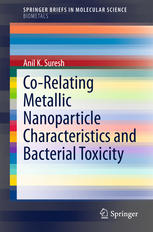

Most ebook files are in PDF format, so you can easily read them using various software such as Foxit Reader or directly on the Google Chrome browser.
Some ebook files are released by publishers in other formats such as .awz, .mobi, .epub, .fb2, etc. You may need to install specific software to read these formats on mobile/PC, such as Calibre.
Please read the tutorial at this link: https://ebookbell.com/faq
We offer FREE conversion to the popular formats you request; however, this may take some time. Therefore, right after payment, please email us, and we will try to provide the service as quickly as possible.
For some exceptional file formats or broken links (if any), please refrain from opening any disputes. Instead, email us first, and we will try to assist within a maximum of 6 hours.
EbookBell Team

4.4
62 reviewsThis brief gives a concise overview of nanoparticles and their microbial toxicity. It introduces various nanoparticles that are considered lethal to microbial cells (bacteria, virus and fungus) placing an emphasis on metal and metal oxide nanoparticles. The synthesis procedures (physical, chemical, microbial) that are often employed in their fabrication are also outlined. The interaction of various nanoparticles with microbes is described with attention given to the role of additives in the form of solvents, surfactants, capping materials. Commonly used experimental and analytical techniques that are often used to evaluate and determine the toxicity of nanoparticles towards different microorganisms are presented and comparative assessments on the differences between these procedures are described. The brief ends by explaining the toxicity of metal and metal oxide nanoparticles to microorganisms.